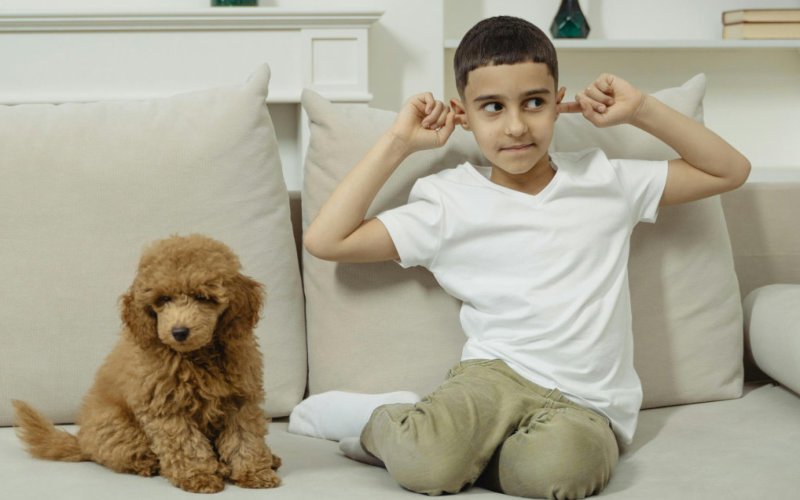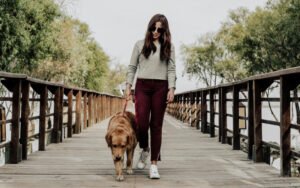New dog owner tips are essential for anyone embarking on the rewarding journey of dog ownership. Bringing a new dog into your life is a joyous occasion, but it also comes with its own set of challenges. For first-time owners, navigating this exciting journey can be overwhelming. That’s why we’ve compiled these essential tips to help you create a loving and supportive environment for your new furry friend. From understanding their needs to building a strong bond, this guide will equip you with the knowledge and tools necessary for a successful start to your life together. Let’s explore the key aspects of dog ownership that will ensure a happy and healthy relationship between you and your new companion.
Table of Contents
Preparing Your Home for a New Dog
Welcoming a new dog into your home is an exciting time, but it requires careful preparation to ensure your furry friend feels safe and secure. Here are some essential new dog owner tips to help you prepare your home for your new companion.
Create a Safe Space
First and foremost, designate a specific area in your home for your new dog. This should be a quiet and comfortable space where they can retreat when feeling overwhelmed. A dog bed or blanket in a calm corner of a room can provide a perfect resting spot. Consider using a crate if you plan to crate train, as it can offer a safe haven for your dog.
Dog-Proof Your Home
To keep your new dog safe, it’s crucial to dog-proof your home. Start by removing any potentially harmful items from their reach. Tuck away electrical cords, secure loose wires, and ensure that small objects which could be swallowed are kept out of sight. Familiarise yourself with common household plants that are toxic to dogs, such as lilies and azaleas, and consider removing them from your home.
Secure Your Garden
If you have a garden, make sure it is a safe and secure environment for your dog. Check the fencing for any gaps or holes where your dog might escape. Remove any hazardous materials, such as chemicals, tools, or sharp objects, and keep your garden free of toxic plants. A secure garden will provide your dog with a safe place to explore and play.
Stock Up on Essentials
Before your new dog arrives, it’s important to gather all the essential supplies they will need. This includes high-quality dog food appropriate for their age and breed, food and water bowls, a comfortable bed, a collar and lead, and a selection of toys to keep them entertained. Having everything ready in advance will help your dog settle in quickly.
Establish House Rules
As a new dog owner, it’s vital to establish clear house rules from the beginning. Decide which areas of your home are off-limits and communicate these rules consistently. Whether you prefer to allow your dog on the furniture or not, being clear about boundaries will help your dog understand their new environment and reduce confusion.
Prepare for the Transition
Finally, remember that bringing a new dog home is a big transition for both you and your pet. Be patient as they adjust to their new surroundings. Keep their routine consistent and provide plenty of love and reassurance. This will help your new dog feel secure and comfortable in their new home.
By following these new dog owner tips, you can create a welcoming and safe environment for your new canine companion. A little preparation goes a long way in ensuring a smooth transition, helping both you and your dog enjoy a happy and fulfilling life together.

Essential Supplies for New Dog Owners
As a new dog owner, it’s essential to ensure you have the right supplies to keep your furry friend happy and healthy. Having the right items can make the transition smoother for both you and your new pet. Here are some crucial new dog owner tips to guide you in gathering the essentials.
Food and Water Bowls
First and foremost, you’ll need sturdy food and water bowls. Opt for stainless steel or ceramic bowls as they are durable and easy to clean. Ensure the bowls are the appropriate size for your dog’s breed to prevent spills and allow comfortable eating and drinking.
High-Quality Dog Food
Choosing the right dog food is vital for your dog’s health and wellbeing. Look for high-quality dog food that is appropriate for your dog’s age, size, and dietary needs. Consult your veterinarian for recommendations, and remember to gradually transition your dog to a new food if you’re changing brands to avoid digestive issues.
Comfortable Dog Bed
A comfortable dog bed is essential for your pet’s resting and sleeping needs. Select a bed that suits your dog’s size and provides adequate support. Consider their sleeping habits as well—if they like to curl up, a round bed might be best, while a flat bed is suitable for dogs that prefer to stretch out.
Collar and Lead
A good quality collar and lead are essential for walks and outdoor adventures. Ensure the collar fits properly—two fingers should fit between the collar and your dog’s neck. A standard lead is ideal for everyday walks, but you might also consider a harness for better control and comfort, especially for dogs that tend to pull.
Toys for Mental Stimulation
Toys are not just for fun; they also provide mental stimulation and help prevent boredom. Invest in a variety of toys, including chew toys, interactive toys, and puzzle toys that challenge your dog’s mind. This will keep them engaged and help to reduce destructive behaviour.
Grooming Supplies
Regular grooming is important for your dog’s health, regardless of their coat type. Basic grooming supplies include a brush suitable for your dog’s coat, dog shampoo, and nail clippers. Establishing a grooming routine early on will help your dog become accustomed to being handled and promote a healthy coat.
Identification and Microchip
Ensure your dog has proper identification. A collar with an ID tag that includes your contact details is crucial. Additionally, consider microchipping your dog for extra security. This ensures that if your dog goes missing, they can be easily returned to you.
Crate for Training and Safety
If you plan to crate train, a crate can be an invaluable tool for managing your dog and providing them with a safe space. Choose a crate that is appropriately sized, allowing your dog to stand up, turn around, and lie down comfortably. Crate training can help with house training and provide your dog with a sense of security.
First Aid Kit
Finally, having a basic first aid kit for your dog is a wise investment. Include items like bandages, antiseptic wipes, and tweezers for splinter removal. Familiarise yourself with basic first aid for dogs and have the contact details of a local vet readily available.
By following these new dog owner tips and gathering the essential supplies listed above, you’ll be well-equipped to welcome your new furry friend into your home. A little preparation goes a long way in ensuring your dog’s comfort and happiness, setting the stage for a strong and loving relationship.
Understanding Dog Food and Nutrition
When it comes to caring for your new dog, understanding their nutritional needs is paramount. Proper nutrition plays a crucial role in your dog’s overall health, growth, and energy levels. Here are some essential new dog owner tips to help you navigate the world of dog food and nutrition.
Know Your Dog’s Nutritional Needs
Different dogs have different nutritional requirements based on their age, size, breed, and activity level. Puppies, for example, require food that supports their rapid growth and development, while adult dogs need a balanced diet to maintain their health. Senior dogs may need lower-calorie diets with specific nutrients to support their changing needs. Always consult your veterinarian for personalised advice on the best diet for your dog.
Choose the Right Type of Dog Food
There are several types of dog food available, each with its pros and cons:
- Dry Food (Kibble): This is the most common type of dog food. It’s convenient, cost-effective, and helps keep teeth clean due to its crunchy texture. Look for high-quality brands that list meat as the first ingredient and contain no fillers or artificial additives.
- Wet Food: Canned dog food often contains more moisture and can be more palatable for dogs. It’s a good option for picky eaters or dogs that need extra hydration. However, it’s generally more expensive than dry food and may not provide the same dental benefits.
- Raw Food: Some owners opt for a raw food diet, which includes raw meat, bones, fruits, and vegetables. While this diet can be beneficial if done correctly, it requires careful planning to ensure it meets all nutritional needs and is safe to handle.
- Homemade Diets: Preparing homemade meals for your dog can be a great way to control their diet, but it’s essential to work with a vet to ensure that you’re providing a balanced and complete diet.
Read the Labels
Understanding dog food labels is crucial. Look for a statement from Associations that indicates the food meets specific nutritional standards. Check the ingredient list, aiming for foods with high-quality, identifiable ingredients. Avoid foods with vague terms like “meat by-products” and “fillers.”
Portion Control and Feeding Schedule
Portion control is vital to prevent obesity and related health issues. Follow the feeding guidelines on the dog food packaging as a starting point, but remember that individual dogs may require adjustments based on their activity level and metabolism. Establishing a consistent feeding schedule can help regulate your dog’s digestion and prevent overeating. Most adult dogs do well with two meals a day, while puppies may require three to four smaller meals.
Monitor Your Dog’s Weight and Health
Regularly monitor your dog’s weight and overall health. A healthy dog should have a visible waist when viewed from above, and their ribs should be easily felt but not seen. If you notice any sudden changes in weight, appetite, or energy levels, consult your veterinarian to rule out any underlying health issues.
Stay Hydrated
Don’t forget the importance of fresh water! Ensure your dog has access to clean, fresh water at all times, as hydration is crucial for their health. Change the water daily and clean the bowl regularly to prevent bacteria buildup.
By following these new dog owner tips on understanding dog food and nutrition, you can provide your new companion with the best possible diet. A well-nourished dog is a happy and healthy dog, setting the foundation for a long and fulfilling life together.
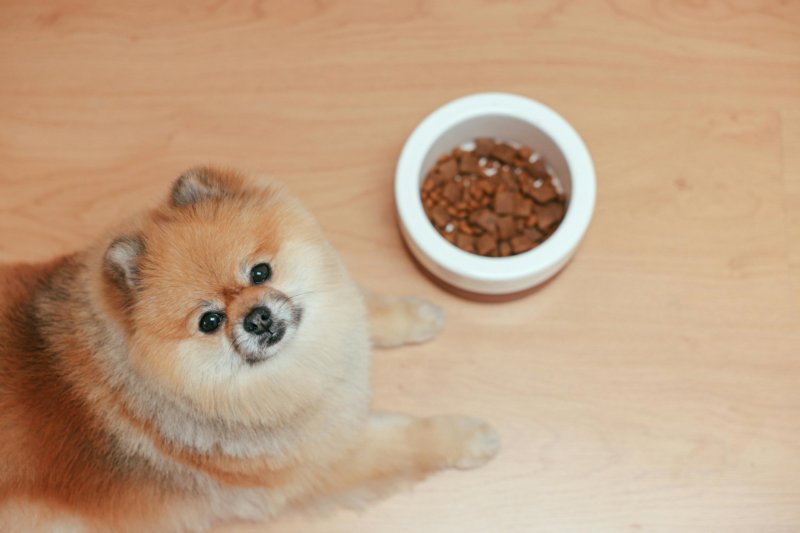
Training Tips for New Dog Owners
Training your new dog is an essential part of pet ownership that fosters a strong bond between you and your furry friend. Proper training not only teaches your dog good behaviour but also ensures their safety and the happiness of your household. Here are some key new dog owner tips to help you navigate the training process effectively.
Start Early
Begin training your dog as soon as you bring them home. Puppies are particularly receptive to learning during their early months, but even adult dogs can benefit from training. The sooner you start, the easier it will be to establish good habits and prevent unwanted behaviours.
Use Positive Reinforcement
Positive reinforcement is one of the most effective training methods. Reward your dog with treats, praise, or playtime when they perform the desired behaviour. This encourages them to repeat the behaviour in the future. Avoid using negative reinforcement, as it can lead to fear and anxiety, which can hinder the training process.
Be Consistent
Consistency is key in dog training. Use the same commands and signals for specific actions, and ensure all family members are on the same page. For example, if you use “sit” to get your dog to sit, everyone in the household should use the same command. Consistency helps your dog understand what is expected of them.
Keep Training Sessions Short
Dogs have short attention spans, so keep training sessions brief—around 5 to 10 minutes is ideal. Multiple short sessions throughout the day are often more effective than one long session. This approach keeps your dog engaged and makes training a positive experience.
Socialise Your Dog
Socialisation is an essential aspect of training. Expose your dog to different people, environments, and other animals to help them become well-adjusted and confident. Start socialisation early, particularly for puppies, as this can help reduce fear and anxiety in new situations.
Teach Basic Commands
Focus on teaching your dog basic commands such as sit, stay, come, and down. These commands form the foundation for more advanced training and help ensure your dog’s safety. Practice these commands regularly and reinforce them with positive rewards.
Be Patient
Training takes time, and every dog learns at their own pace. Be patient and avoid frustration if your dog doesn’t pick up commands immediately. Celebrate small victories and remember that consistency and positive reinforcement will yield results over time.
Address Behavioural Issues Early
If your dog exhibits problematic behaviours such as barking, chewing, or jumping, address these issues promptly. Ignoring bad behaviour can lead to it becoming a habit. Redirect your dog’s attention to more appropriate behaviours and reward them when they comply.
Consider Professional Training Classes
If you’re unsure where to start or if your dog is struggling with training, consider enrolling in a professional training class. Many trainers offer group classes or one-on-one sessions that can provide valuable guidance and socialisation opportunities for your dog.
Keep It Fun
Finally, remember that training should be a fun and rewarding experience for both you and your dog. Incorporate play into training sessions and keep a positive attitude. A happy dog is more likely to respond well to training, and the bond you build through training will enhance your relationship.
By following these new dog owner tips on training, you can help your new dog become a well-mannered and happy member of your family. Consistent, positive training sets the foundation for a strong bond and a fulfilling life together.
Building a Routine: Exercise and Playtime
Establishing a routine for exercise and playtime is crucial for the physical and mental wellbeing of your new dog. Regular activity helps to maintain a healthy weight, prevents boredom, and strengthens the bond between you and your furry friend. Here are some essential new dog owner tips to help you build an effective routine.
Understand Your Dog’s Exercise Needs
Different breeds have varying exercise requirements, so it’s important to understand what your dog needs. Active breeds like Border Collies and Labrador Retrievers may require more exercise—up to two hours a day—while less active breeds may be satisfied with shorter walks. Consult your veterinarian or a reputable breed guide to determine the ideal exercise regimen for your dog.
Daily Walks
Incorporate daily walks into your dog’s routine, as they provide essential physical exercise and mental stimulation. Aim for at least one walk per day, adjusting the duration and intensity based on your dog’s age and fitness level. Walking not only helps keep your dog fit but also allows them to explore their environment and socialise with other dogs and people.
Playtime is Essential
Playtime is just as important as exercise. Engage your dog in interactive games such as fetch, tug-of-war, or hide-and-seek. These activities not only provide physical exercise but also stimulate your dog’s mind. Regular playtime can help reduce behavioural problems that stem from boredom or pent-up energy.
Establish a Consistent Schedule
Dogs thrive on routine, so try to establish a consistent schedule for walks and playtime. Designate specific times during the day for exercise, making it part of your daily routine. Consistency helps your dog understand what to expect, which can reduce anxiety and enhance their overall behaviour.
Incorporate Training into Exercise
Combine training with exercise for a dual benefit. Practice basic commands or tricks during walks or play sessions. This not only reinforces training but also keeps your dog mentally engaged. Short training sessions can be easily integrated into your exercise routine, providing a productive and fun experience for both of you.
Explore Different Activities
Mix up your exercise routine by exploring different activities. Consider taking your dog for hikes, visiting a dog park, or trying agility training. Variety helps keep your dog interested and excited about exercise, preventing boredom and promoting a healthy lifestyle.
Monitor Weather Conditions
Be mindful of weather conditions when planning exercise. On hot days, avoid strenuous activities during peak heat hours, opting for early morning or late evening walks instead. In winter, keep an eye on the ground for ice and ensure your dog is warm enough, particularly if they have a short coat. Adjust your routine to ensure your dog stays safe and comfortable in all weather conditions.
Pay Attention to Your Dog’s Signals
Always observe your dog during exercise and playtime. Look for signs of fatigue or discomfort, such as excessive panting, lagging behind, or reluctance to engage in play. Adjust the intensity and duration of your activities accordingly, allowing your dog to rest when needed.
Consider Your Dog’s Age and Health
Finally, consider your dog’s age and overall health when building an exercise routine. Puppies have boundless energy but may need shorter, more frequent sessions, while older dogs may require gentler activities. Always consult your veterinarian if you have any concerns about your dog’s exercise routine or health.
By following these new dog owner tips and building a consistent routine for exercise and playtime, you can ensure your dog remains healthy, happy, and well-adjusted. A well-exercised dog is a more content companion, leading to a stronger bond between you and your furry friend.
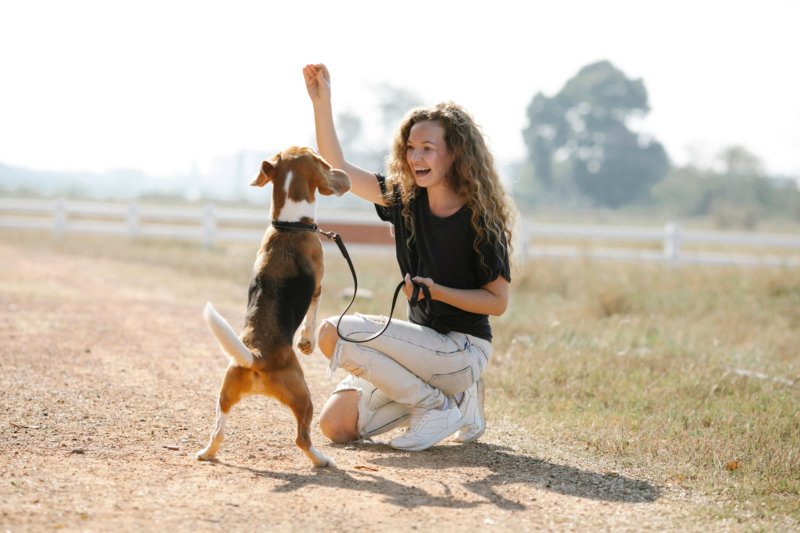
Health and Wellness Basics
As a new dog owner, prioritising your dog’s health and wellness is essential to ensuring a long and happy life together. Understanding the basics of canine health can help you provide the best care possible. Here are some important new dog owner tips to keep your furry friend healthy and thriving.
Regular Veterinary Check-Ups
Scheduling regular veterinary check-ups is one of the most crucial aspects of your dog’s health. Puppies should visit the vet for vaccinations, health checks, and advice on nutrition and care. Adult dogs benefit from annual check-ups, while older dogs may need more frequent visits. Your vet will monitor your dog’s health, administer vaccinations, and provide preventative care, helping to catch any potential health issues early.
Vaccinations and Preventative Care
Vaccinations are vital for protecting your dog from various diseases. Common vaccinations include those for parvovirus, distemper, and kennel cough. Discuss your dog’s vaccination schedule with your veterinarian and ensure they are up to date. Additionally, preventative care such as flea, tick, and worm treatments should be part of your dog’s routine to keep them free from parasites.
Healthy Diet
A balanced and nutritious diet is fundamental to your dog’s health. Choose high-quality dog food appropriate for your dog’s age, size, and activity level. Consult your vet for recommendations on the best diet for your dog and how to manage portion sizes. Regularly monitor your dog’s weight and adjust their diet as needed to maintain a healthy body condition.
Exercise and Mental Stimulation
Regular exercise is essential for both physical and mental health. Ensure your dog gets adequate exercise based on their breed and age, as discussed in the previous section. Mental stimulation is equally important; provide toys, puzzles, and training exercises to keep your dog’s mind active. A well-exercised dog is less likely to develop behavioural issues stemming from boredom or excess energy.
Grooming and Dental Care
Regular grooming is necessary for maintaining your dog’s coat and skin health. Depending on your dog’s breed, grooming needs may vary. Regular brushing helps reduce shedding and prevents matting. Additionally, dental care is crucial; brush your dog’s teeth regularly with dog-specific toothpaste and consider dental chews to promote oral health.
Watch for Signs of Illness
As a new dog owner, it’s important to be observant of any changes in your dog’s behaviour or appearance. Signs of illness can include changes in appetite, lethargy, vomiting, diarrhoea, excessive itching, or changes in drinking habits. If you notice any concerning symptoms, contact your veterinarian promptly for advice.
Socialisation and Behaviour
Socialisation is an integral part of your dog’s overall wellness. Expose your dog to various environments, people, and other animals to help them develop confidence and reduce anxiety. Positive experiences during socialisation can lead to well-adjusted behaviour throughout their life.
Spaying or Neutering
Consider discussing the option of spaying or neutering your dog with your veterinarian. These procedures can prevent unwanted litters and may also help reduce the risk of certain health issues, including cancers and behavioural problems.
First Aid Knowledge
Having a basic understanding of first aid for dogs is beneficial for every new dog owner. Familiarise yourself with common first aid procedures, such as how to handle choking, wounds, or minor injuries. Keep a pet first aid kit on hand and ensure you have the contact details of your veterinarian and an emergency animal clinic.
Establish a Routine
Finally, establish a routine for your dog’s health care, including feeding, exercise, grooming, and veterinary visits. A consistent routine can help your dog feel secure and make it easier for you to manage their health needs.
By following these new dog owner tips on health and wellness, you can ensure your dog enjoys a long, happy, and healthy life. Being proactive in their care will help you build a strong bond and create many joyful memories together.
Socialisation and Behaviour Tips
Socialisation is a crucial aspect of raising a well-adjusted dog. Properly socialising your new pet can help them develop confidence, reduce anxiety, and prevent behavioural issues. Here are some essential new dog owner tips to ensure your dog becomes a happy and well-mannered companion.
Start Early
The best time to begin socialising your dog is during their critical development window, which is typically between three and fourteen weeks of age. However, older puppies and adult dogs can also benefit from socialisation. The earlier you start exposing your dog to various experiences, the more comfortable they will be in different situations.
Expose Your Dog to Different Environments
Introduce your dog to a variety of environments, including busy streets, parks, and different types of surfaces (like grass, pavement, and gravel). Encourage them to explore new smells, sights, and sounds. This exposure will help them adapt to different environments and reduce anxiety when encountering new experiences in the future.
Meet Different People and Dogs
Encourage your dog to interact with a diverse range of people and other dogs. Arrange playdates with friends’ dogs and visit dog parks to allow your pet to socialise with others. Make sure these encounters are positive by monitoring their body language and intervening if they appear anxious or overwhelmed. Reward your dog for calm behaviour around new people and pets.
Attend Puppy Classes or Training Sessions
Puppy classes are an excellent way to socialise your dog while teaching them basic commands. Look for classes that focus on positive reinforcement techniques and provide opportunities for social interaction. Training sessions help build your dog’s confidence and provide an environment where they can learn to behave appropriately around other dogs and people.
Gradual Introductions
When introducing your dog to new experiences or environments, take it slow. Gradually expose them to new situations and avoid overwhelming them. For instance, if you’re visiting a busy area, allow your dog to observe from a distance before getting closer. Gradual introductions help your dog feel more secure and build their confidence.
Use Positive Reinforcement
Reward your dog for calm and confident behaviour in new situations. Use treats, praise, or playtime to reinforce positive interactions. This positive reinforcement encourages your dog to associate new experiences with rewards, making them more likely to embrace similar situations in the future.
Monitor Body Language
Understanding your dog’s body language is key to successful socialisation. Look for signs of stress or discomfort, such as tucked tails, flattened ears, or excessive yawning. If you notice any of these signs, give your dog space and time to adjust. Never force your dog into a situation that makes them uncomfortable, as this can lead to fear and anxiety.
Encourage Positive Behaviour
Focus on encouraging and rewarding positive behaviours rather than only correcting negative ones. For example, if your dog greets a new person calmly, reward them with treats and praise. This helps reinforce good behaviour and encourages them to repeat it in the future.
Limit Negative Experiences
While socialisation is important, it’s equally crucial to manage your dog’s experiences. Try to avoid situations where your dog may feel threatened or scared. If your dog has a negative experience, such as a harsh encounter with another dog, it may take time and patience to rebuild their confidence in similar situations.
Continue Socialisation Throughout Life
Socialisation is an ongoing process. Continue to expose your dog to new experiences, people, and environments throughout their life. Regular socialisation helps prevent behavioural issues and keeps your dog well-adjusted and confident.
By following these new dog owner tips on socialisation and behaviour, you can help your dog grow into a well-rounded and confident companion. A well-socialised dog is not only happier but also easier to manage in various situations, leading to a stronger bond between you and your furry friend.
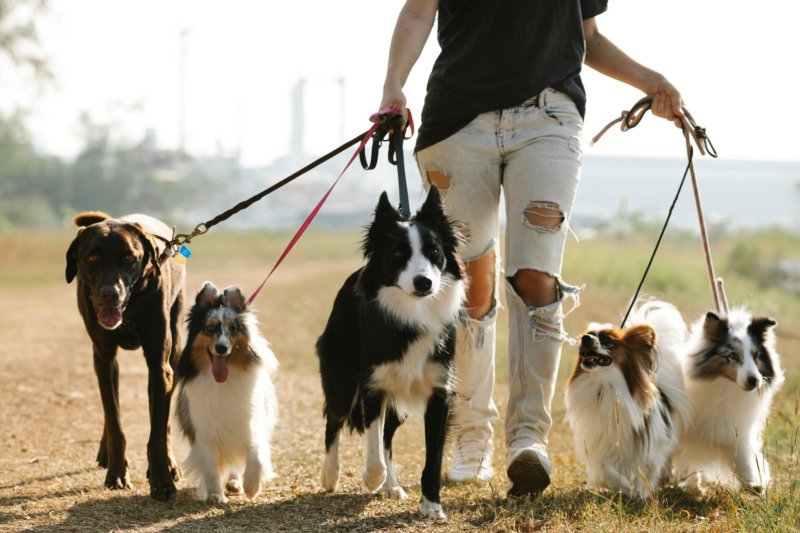
Safety Tips for First-Time Dog Owners
Ensuring the safety of your new dog is a top priority as a first-time owner. Dogs are curious creatures, and taking proactive steps can prevent accidents and keep your furry friend safe. Here are some essential new dog owner tips to help you maintain a safe environment for your dog.
Create a Safe Home Environment
Begin by dog-proofing your home. Remove any hazardous items such as cleaning supplies, medications, and toxic plants from areas accessible to your dog. Use child-proof locks on cabinets and secure electrical cords to prevent chewing. Ensure that any small objects that could be swallowed are out of reach.
Secure Your Garden
If you have a garden, make sure it is securely fenced to prevent your dog from escaping. Check for any gaps or weak points in the fence and repair them promptly. Additionally, be cautious about leaving your dog unsupervised in the garden, especially if there are potentially toxic plants or chemicals, such as fertilisers or pesticides.
Use a Proper Collar and ID Tag
Always ensure your dog wears a collar with an ID tag that includes your contact information. This is especially important if your dog manages to escape. Microchipping is also highly recommended, as it provides a permanent form of identification that can help reunite you with your dog if they get lost.
Leash Safety
When out on walks, always use a sturdy leash and a properly fitted harness or collar. This not only prevents your dog from running off but also keeps them safe from potential dangers, such as busy roads or aggressive dogs. A retractable leash can be useful for giving your dog some freedom, but ensure you have control at all times.
Be Aware of Your Surroundings
When walking your dog, be aware of your surroundings and potential hazards. Keep your dog away from busy roads, construction sites, or areas with aggressive animals. If you’re in a public place, be vigilant about other dogs and people, ensuring your dog remains calm and under control.
Monitor Playtime with Other Dogs
If your dog enjoys playing with other dogs, monitor their interactions closely. Not all dogs are well socialised, and play can quickly turn aggressive. Be cautious about allowing your dog to play with unfamiliar dogs until you’re confident in their behaviour and temperament.
Educate Yourself on Toxic Foods
Certain human foods are toxic to dogs, including chocolate, grapes, onions, and avocados. Familiarise yourself with these and other toxic substances to keep them out of reach of your dog. Always check with your veterinarian before introducing new foods into your dog’s diet.
Provide a Safe Space
Establish a safe space in your home where your dog can retreat when feeling overwhelmed or anxious. This could be a crate or a quiet corner with their bed and toys. Having a designated safe area can help your dog feel secure and reduce stress.
Keep Dangerous Items Out of Reach
Ensure that items such as sharp objects, small toys, and household chemicals are stored safely and out of your dog’s reach. This helps prevent accidental injuries and ensures a safer environment for your new pet.
Be Prepared for Emergencies
Prepare for emergencies by having a basic first aid kit specifically for your dog. Include items such as bandages, antiseptic wipes, tweezers, and a digital thermometer. Familiarise yourself with basic first aid procedures and know the contact information for your veterinarian and an emergency animal clinic.
Regular Health Check-Ups
Regular veterinary check-ups are essential for your dog’s health and safety. Keep up with vaccinations, parasite control, and dental care to ensure your dog remains in good health. A healthy dog is less likely to encounter health-related emergencies.
By following these new dog owner tips for safety, you can create a secure environment that allows your dog to thrive. A safe and well-cared-for dog is a happy companion, enhancing the joy of pet ownership and ensuring a fulfilling relationship between you and your furry friend.
Travel and Transportation Tips with a New Dog
Traveling with your new dog can be a rewarding experience, but it requires careful planning to ensure their comfort and safety. Whether you’re heading to the vet, going on holiday, or simply taking a day trip, here are some essential new dog owner tips for travelling with your furry friend.
Prepare for the Journey
Before you travel, take the time to prepare your dog for the journey ahead. If your dog is not accustomed to car rides, start with short trips to help them acclimatise. Gradually increase the length of these trips, allowing your dog to get used to the movement and sounds of the vehicle.
Use a Secure Restraint
Safety is paramount when transporting your dog. Always secure your dog in the car using a dog seatbelt, harness, or crate. A properly fitted harness can help prevent distractions while driving, while a crate offers a safe space for your dog to relax during the journey. Ensure the crate is well-ventilated and large enough for your dog to stand, turn around, and lie down comfortably.
Plan for Breaks
If you’re embarking on a long journey, plan for regular breaks to give your dog a chance to stretch their legs, relieve themselves, and hydrate. Stop every couple of hours, allowing your dog to walk around safely on a leash. This helps to prevent restlessness and ensures they stay comfortable throughout the trip.
Bring Essentials
Pack a travel bag for your dog containing all the essentials they will need during the journey. Include their food and water, bowls, leash, waste bags, grooming supplies, and any medications they may require. Bringing familiar items such as a favourite blanket or toy can also help comfort your dog during travel.
Ensure Comfort and Safety
Keep your dog’s comfort in mind while travelling. In hot weather, ensure the car is well-ventilated and never leave your dog alone in a parked car, as temperatures can quickly rise to dangerous levels. In colder weather, make sure your dog is warm and comfortable. Consider using a doggy seat cover or blanket to protect your car’s interior and provide a familiar surface for your dog to rest on.
Familiarise Yourself with Pet-Friendly Accommodation
If you’re planning to stay away from home, research pet-friendly accommodation in advance. Many hotels, B&Bs, and holiday rentals welcome dogs, but it’s essential to check their pet policy before booking. Make reservations ahead of time to ensure you have a suitable place to stay.
Keep Identification Updated
Before travelling, ensure your dog is wearing a collar with an ID tag that includes your contact information. Microchipping is also advisable for an additional layer of security. In case your dog gets lost, having up-to-date identification increases the chances of a safe reunion.
Be Mindful of Different Environments
When visiting new places, be aware of your dog’s behaviour in unfamiliar environments. Some dogs may feel anxious or overwhelmed in crowded or noisy areas. Introduce your dog to new surroundings gradually and be prepared to retreat to a quieter space if needed.
Consider Travel Crates for Air Travel
If you’re travelling by air, it’s essential to check with the airline about their pet travel policies. Many airlines require dogs to be transported in a travel crate that meets specific guidelines. Familiarise your dog with the crate before the journey and ensure it’s comfortable and secure for them.
Monitor Your Dog’s Health
During the journey, keep an eye on your dog’s health and behaviour. If you notice any signs of distress, such as excessive panting, whining, or restlessness, take a break and assess the situation. If your dog experiences motion sickness, consult your veterinarian for advice on managing the condition.
By following these new dog owner tips for travel and transportation, you can ensure a smooth and enjoyable journey for both you and your dog. With proper preparation and care, travelling with your furry companion can lead to memorable experiences and strengthen your bond.
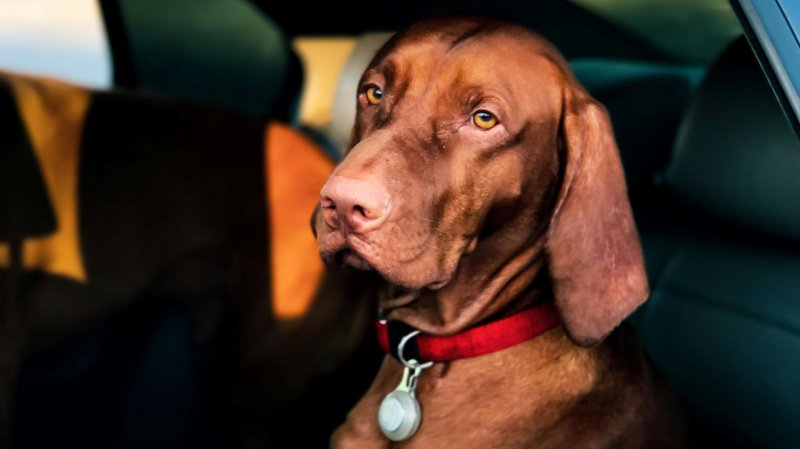
Bonding with Your New Dog
Creating a strong bond with your new dog is essential for a happy and fulfilling relationship. A positive connection can lead to improved behaviour, enhanced trust, and a deeper understanding between you and your pet. Here are some valuable new dog owner tips to help you establish a solid bond with your new furry friend.
Spend Quality Time Together
The foundation of any strong relationship is spending time together. Dedicate time each day to engage with your dog through activities like walks, play sessions, or simply sitting together. This shared time helps your dog feel valued and strengthens your connection.
Use Positive Reinforcement
Positive reinforcement is an effective training method that helps build trust and strengthen your bond. Reward your dog with treats, praise, or play when they display desired behaviours. This not only encourages good behaviour but also helps your dog associate you with positive experiences.
Create a Routine
Establishing a daily routine can provide your dog with a sense of security and stability. Regular feeding, walks, and playtimes help your dog understand what to expect each day. Consistency in your interactions fosters trust and allows your dog to feel comfortable in their new environment.
Engage in Interactive Play
Playtime is an excellent opportunity to bond with your dog. Engage in interactive games such as fetch, tug-of-war, or hide-and-seek. These activities not only provide mental and physical stimulation but also create fun and enjoyable experiences that enhance your relationship.
Be Patient and Understanding
Adjusting to a new home can be overwhelming for your dog. They may feel anxious or scared initially, especially if they have recently come from a shelter or rescue situation. Be patient and understanding during this transition period. Allow your dog to explore their surroundings at their own pace and provide reassurance through gentle interaction.
Communicate Effectively
Understanding your dog’s body language and vocalisations is crucial for effective communication. Pay attention to their signals, such as wagging tails, relaxed ears, or playful behaviour, which indicate happiness and comfort. Conversely, signs of stress or discomfort, like tucked tails or flattened ears, require your attention. Responding appropriately to your dog’s needs strengthens your bond and fosters trust.
Train Together
Training sessions are not only essential for your dog’s development but also provide an excellent opportunity to bond. Teach your dog basic commands and tricks using positive reinforcement techniques. The time spent training together builds teamwork and encourages a deeper connection.
Share Experiences
Involve your dog in your daily life and activities. Whether it’s going for a drive, visiting dog-friendly parks, or participating in local dog events, sharing experiences creates lasting memories and strengthens your bond. Look for opportunities to expose your dog to new sights, sounds, and experiences that they can enjoy with you.
Provide Comfort and Security
Ensure that your dog has a safe and comfortable space within your home. Create a designated area with their bed, toys, and a few personal items to help them feel secure. A safe space allows your dog to relax and feel at home, which is crucial for bonding.
Respect Their Individuality
Every dog has its own personality and preferences. Some may enjoy cuddling, while others may prefer to keep their distance. Take the time to understand your dog’s unique traits and respect their individual needs. Tailoring your interactions to suit their personality will help foster a stronger bond.
Be Consistent
Consistency in your training and interactions is key to building trust. Use the same commands, routines, and expectations consistently to avoid confusing your dog. This clarity helps your dog understand what you want from them and reinforces your bond.
By following these new dog owner tips for bonding with your new dog, you can create a loving and trusting relationship that will enhance your lives together. Remember, the more time and effort you invest in building this bond, the stronger and more rewarding your connection will become.
Conclusion and Final Thoughts
Bringing a new dog into your home is an exciting journey filled with love and companionship. By following these new dog owner tips, you can ensure a smooth transition for both you and your furry friend. From preparing your home and understanding essential supplies to establishing routines and fostering a strong bond, each aspect plays a vital role in your dog’s well-being and happiness.
Remember that patience and understanding are key as your new dog adjusts to their environment. Invest time in training, socialisation, and creating a safe space, and you’ll pave the way for a fulfilling relationship. With the right approach, your new dog will become a cherished member of your family, bringing joy, loyalty, and endless companionship to your life.
Embrace this rewarding experience, and enjoy the journey of becoming a loving and responsible dog owner!

